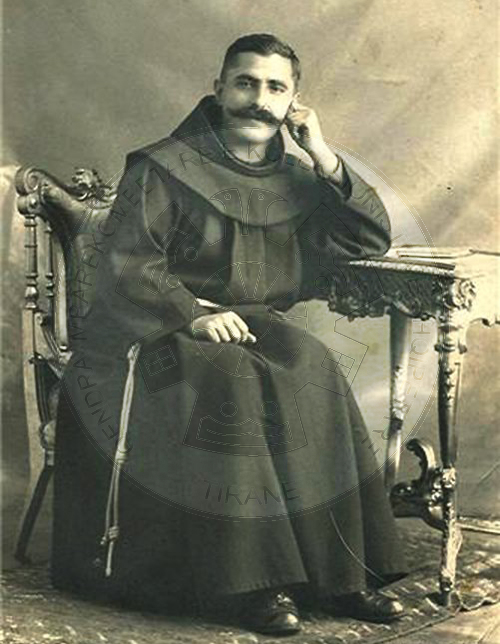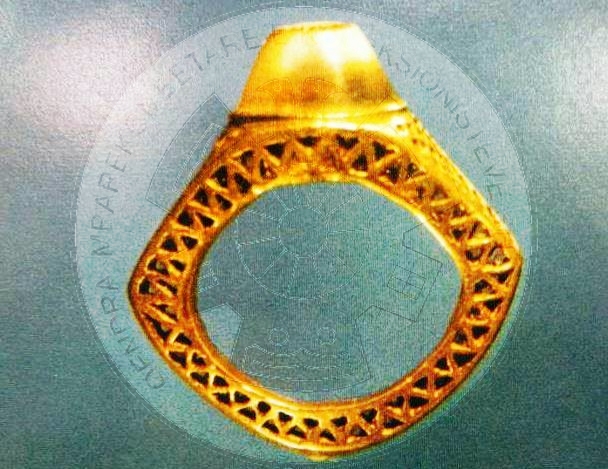Recalling on the 142th birth anniversary of Father Shtjefen Gjecov, his contribution to ethno culture; Gathered the mountain canon, wrote historical drama for the Albanian medieval, but also traced and rescued archaeological assets. One of the unique cases we recall in this reminder is the preservation of the gold ring, found in 1900, for which it has provided a complete description and information in advance, the Italian archaeologist Luigi Ugolini
A few days ago, the director of the National History Museum, scholar Dorian Koci, to remember the brother of Shtjefen Gjecovi on his 142 th birth anniversary, brought one of his most unique stories that proves the conscience of how legacy keeps history on the back. As this case, it entered one of the most significant data to have the awareness of our barbarism by destroying and selling the memory. In this symbolism, especially for today, it has been worth recalling Father Shtjefen Gjecovi, this missionary of knowledge who gathered not only the canon of the mountains or wrote historical drama for the Albanian medieval, but also traced and managed to save the archaeological riches. For this case, the story of the brother in 1900 was how to save a gold ring “to pass to other generations of Albanians”. The confession is broken off by a writer of scholar Jaho Brahaj: “You were in Laz – Sebaste of Kurbin, as the first parishioners, as if to please in old age – to talk now, – I’m in Dr. Paal Traeger from Berlin’s Zehlendorf. The anthropologist and archaeologist who at this time began to engage with belbue taliana, and I as a great man (!) Xuna with you praise for going to the stuff of the twilight I had found at the time of my life Instead of “Koder Bogez” in the village of Lac – Sebaste.
Dr. The traitor asked me to know the weather, even with the man I was leaning forward. Sometimes for once something for another, and this guy with that tongue, he would struggle with my work on those older ones.
Among these items, I also had a ring of stars I found in the site of the mentioned place, and the famous Dr. The trainer, who told me the time of the absenteeism, did not answer, and he replied, “I can not tell the time and the value that archeologists would not betray the time nor the price of old age, but I wanted to Shit, I’m sleeping for 7 (seven) napolands for that ring “!!
I thank the Honorable Dr. The trader, gave me 400 napolana not sell, but just wavering with the days of the old age … “. But the ring was sold. Koci completes the information that the Italian archaeologist L. Ugolini in 1927 estimated this ring describing it included in the volume “Archaeological Albania” from where we have preserved its description and its picture. After Gjecov’s death, the “famous” ring was kept at the Franciscan Museum in Shkodra until 1945, then came to Tirana. Shtjefen Gjecovi was born in Janjevo, Kosovo, on July 12, 1874. After completing the Franciscan College in Troshan, in 1888, he started to study in Croatia. After completing his studies in 1896, he was ordained a priest and served in Peja, Gomsiqe, Theth, Rubik and so on. She Shtjefen Gjecovi represented the erudite intellectual, who gathered hundreds of traditions, prepared scientific monographs, wrote articles, designed textbooks, translated from world literature etc. Shtjefn has published these books: “The Life of Lucis, Consortium of the Durres Archipelago” (1904), “Mark Kuli Kryeqitas” (1905), “Agimi i Qytetit” (1910), “Shna Ndou i padues” ( 1912), “Atil Reguli” (1912), “Orleans’ daughter Joana d’Ark” (1915), “Atil Reguli” (1912), ” Moisi Golemi “and” Kanuni i Leke Dukagjinit “(1933). Shtjefen Gjecovi became famous with the book “Kanuni i Leke Dukagjinit”. The canon rules he gathered from the people’s mouth and initially published them in the magazine “Hyll of Light”. Father Gjechov was killed by Serbian chauvinists on October 14, 1929, in the Zym village of Prizren where he served as a vicar.
Get it from mapo.al


